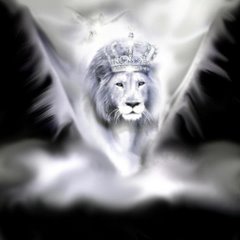
This is part 2 of my series on dragons. Hope you are enjoying the stuff here and learning something. Don't forget, take the poll on the right side of this page as you scroll down. It wont bite! As usual, please click on some of my advertisers, you might see something you like!
Symbolism
In medieval symbolism, dragons were often symbolic of apostasy and treachery, but also of anger and envy, and eventually symbolized great calamity. Several heads were symbolic of decadence and oppression, and also of heresy. They also served as symbols for independence, leadership and strength. Many dragons also represent wisdom; slaying a dragon not only gave access to its treasure hoard, but meant the hero had bested the most cunning of all creatures. In some cultures, especially Chinese, or around the Himalayas, dragons are considered to represent good luck.
Joseph Campbell in the The Power of Myth viewed the dragon as a symbol of divinity or transcendence because it represents the unity of Heaven and Earth by combining the serpent form (earthbound) with the bat/bird form (airborne).
Dragons embody both male and female traits, as in the example from Aboriginal myth that raises baby humans to adulthood, training them for survival in the world.[2] Another striking illustration of the way dragons are portrayed is their ability to breathe fire but live in the ocean. Dragons represent the joining of the opposing forces of the cosmos.
Yet another symbolic view of dragons is the Ouroborus, or the dragon encircling and eating its own tail. When shaped like this the dragon becomes a symbol of eternity, natural cycles, and completion.
In Christianity
In medieval symbolism, dragons were often symbolic of apostasy and treachery, but also of anger and envy, and eventually symbolized great calamity. Several heads were symbolic of decadence and oppression, and also of heresy. They also served as symbols for independence, leadership and strength. Many dragons also represent wisdom; slaying a dragon not only gave access to its treasure hoard, but meant the hero had bested the most cunning of all creatures. In some cultures, especially Chinese, or around the Himalayas, dragons are considered to represent good luck.
Joseph Campbell in the The Power of Myth viewed the dragon as a symbol of divinity or transcendence because it represents the unity of Heaven and Earth by combining the serpent form (earthbound) with the bat/bird form (airborne).
Dragons embody both male and female traits, as in the example from Aboriginal myth that raises baby humans to adulthood, training them for survival in the world.[2] Another striking illustration of the way dragons are portrayed is their ability to breathe fire but live in the ocean. Dragons represent the joining of the opposing forces of the cosmos.
Yet another symbolic view of dragons is the Ouroborus, or the dragon encircling and eating its own tail. When shaped like this the dragon becomes a symbol of eternity, natural cycles, and completion.
In Christianity
The Latin word for a dragon, draco (genitive: draconis), actually means snake or serpent, emphasizing the European association of dragons with snakes, not lizards or dinosaurs as they are commonly associated with today. The Medieval Biblical interpretation of the Devil being associated with the serpent who tempted Adam and Eve, thus gave a snake-like dragon connotations of evil. Generally speaking, Biblical literature itself did not portray this association (save for the Book of Revelation, whose treatment of dragons is detailed below). The demonic opponents of God, Christ, or good Christians have commonly been portrayed as reptilian or chimeric.
In the Book of Job Chapter 41, there are references to a sea monster Leviathan, which has some dragon-like characteristics.
In Revelation 12:3, an enormous red beast with seven heads is described, whose tail sweeps one third of the stars from heaven down to earth (held to be symbolic of the fall of the angels, though not commonly held among biblical scholars). In most translations, the word "dragon" is used to describe the beast, since in the original Greek the word used is drakon (δράκον).
In iconography, some Catholic saints are depicted in the act of killing a dragon. This is one of the common aspects of Saint George in Egyptian Coptic iconography,[3] on the coat of arms of Moscow, and in English and Catalan legend. In Italy, Saint Mercurialis, first bishop of the city of Forlì, is also depicted slaying a dragon.[4] Saint Julian of Le Mans, Saint Veran, Saint Crescentinus, Saint Margaret of Antioch, Saint Martha, and Saint Leonard of Noblac were also venerated as dragon-slayers.
However, some say that dragons were good, before they fell from grace, as humans did from the Garden of Eden after Adam and Eve's Original Sin was committed. Also contributing to the good dragon argument in Christianity is the fact that, if they did exist, they were created as were any other creature, as seen in Dragons In Our Midst, a contemporary Christian book series by author Bryan Davis.
Chinese zodiac
The years 1916, 1928, 1940, 1952, 1964, 1976, 1988, 2000, 2012, 2024, 2036, 2048, 2060 etc. (every 12 years — 8 AD) are considered the Year of the Dragon in the Chinese zodiac.
The Chinese zodiac purports that people born in the Year of the Dragon are healthy, energetic, excitable, short-tempered, and stubborn. They are also supposedly honest, sensitive, brave, and inspire confidence and trust. The Chinese zodiac purports that people whose zodiac sign is the dragon are the most eccentric of any in the eastern zodiac. They supposedly neither borrow money nor make flowery speeches, but tend to be soft-hearted which sometimes gives others an advantage over them. They are purported to be compatible with people whose zodiac sign is of the rat, snake, monkey, and rooster.
In East Asia
Dragons are commonly symbols of good luck or health in some parts of Asia, and are also sometimes worshipped. Asian dragons are considered as mythical rulers of weather, specifically rain and water, and are usually depicted as the guardians of pearls.
In China, as well as in Japan and Korea, the Azure Dragon is one of the Four Symbols of the Chinese constellation, representing spring, the element of Wood and the east. Chinese dragons are often shown with large pearls in their grasp, though some say that it is really the dragon's egg. The Chinese believed that the dragons lived underwater most of the time, and would sometimes offer rice as a gift to the dragons. The dragons were not shown with wings like the European dragons because it was believed they could fly using magic.
A Yellow dragon (Huang long) with five claws on each foot, on the other hand, represents the change of seasons, the element of Earth (the Chinese 'fifth element') and the center. Furthermore, it symbolizes imperial authority in China, and indirectly the Chinese people as well. Chinese people often use the term "Descendants of the Dragon" as a sign of ethnic identity. The dragon is also the symbol of royalty in Bhutan (whose sovereign is known as Druk Gyalpo, or Dragon King).
A naga guarding the Temple of Wat Sisaket in Viang Chan, LaosIn Vietnam, the dragon (Vietnamese: rồng) is the most important and sacred symbol. According to the ancient creation myth of the Kinh people, all Vietnamese people are descended from dragons through Lạc Long Quân, who married Âu Cơ, a fairy. The eldest of their 100 sons founded the first dynasty of Hùng Vương Emperors.
The Nāga - a minor deity taking the form of a serpent - is common within both the Hindu and Buddhist traditions. Technically, the naga is not a dragon, though it is often taken as such; the term is ambiguous, and refers both to a tribe of people known as 'Nāgas', as well as to elephants and ordinary snakes. Within a mythological context, it refers to a deity assuming the form of a serpent with either one or many heads.
Occasionally the Buddha is depicted as sitting upon the coils of a serpent, with a fan of several serpent heads extending over his body. This is in reference to Mucalinda, a Nāga that protected Śākyamuni Buddha from the elements during the time of his enlightenment. Separated from the contextualising effect of the Buddha story, people may see only the head and thus infer that Mucalinda is a dragon, rather than a deity in serpentine form. Stairway railings on Buddhist temples will occasionally be worked to resemble the body of a Nāga with the head at the base of the railing. In Thailand, the head of Nāga, in a more impressionistic form, can be seen at the corners of temple roofs, with Nāga’s body forming the ornamentation on roofline eves up to the gables.
Part 3 will be up in a day or so. Speculation on the origins of dragons, dragons in world wide mythology etc.
Peace & Soulz,
Bobby Sharpewww.myspace.com/akuasharpe BobbySharpe.blogspot.com






No comments:
Post a Comment